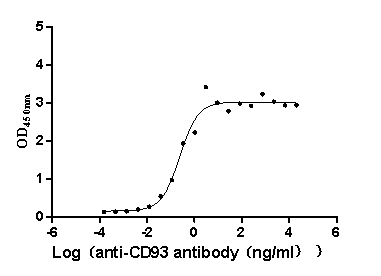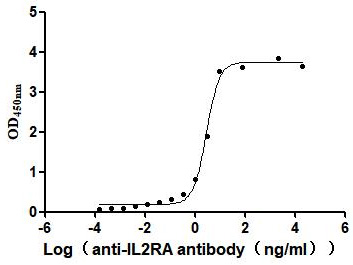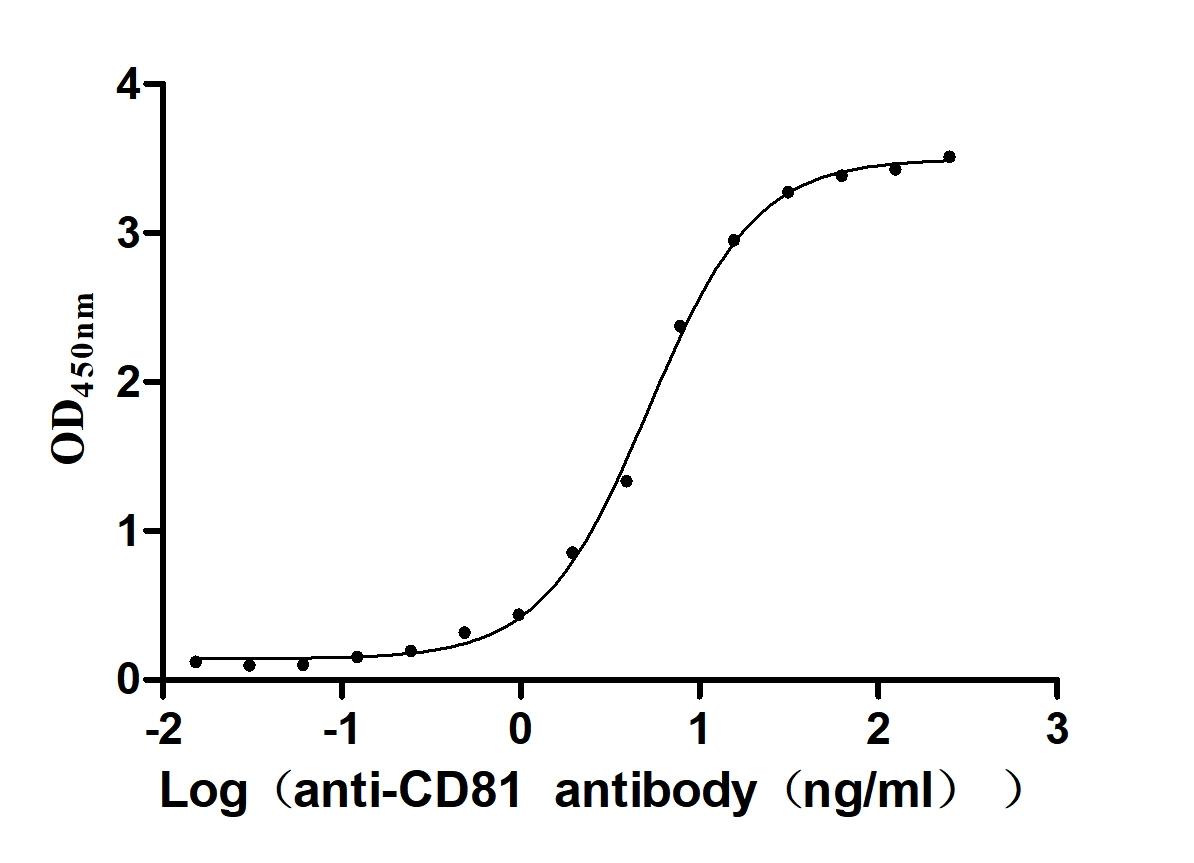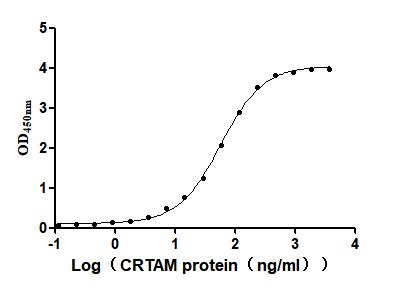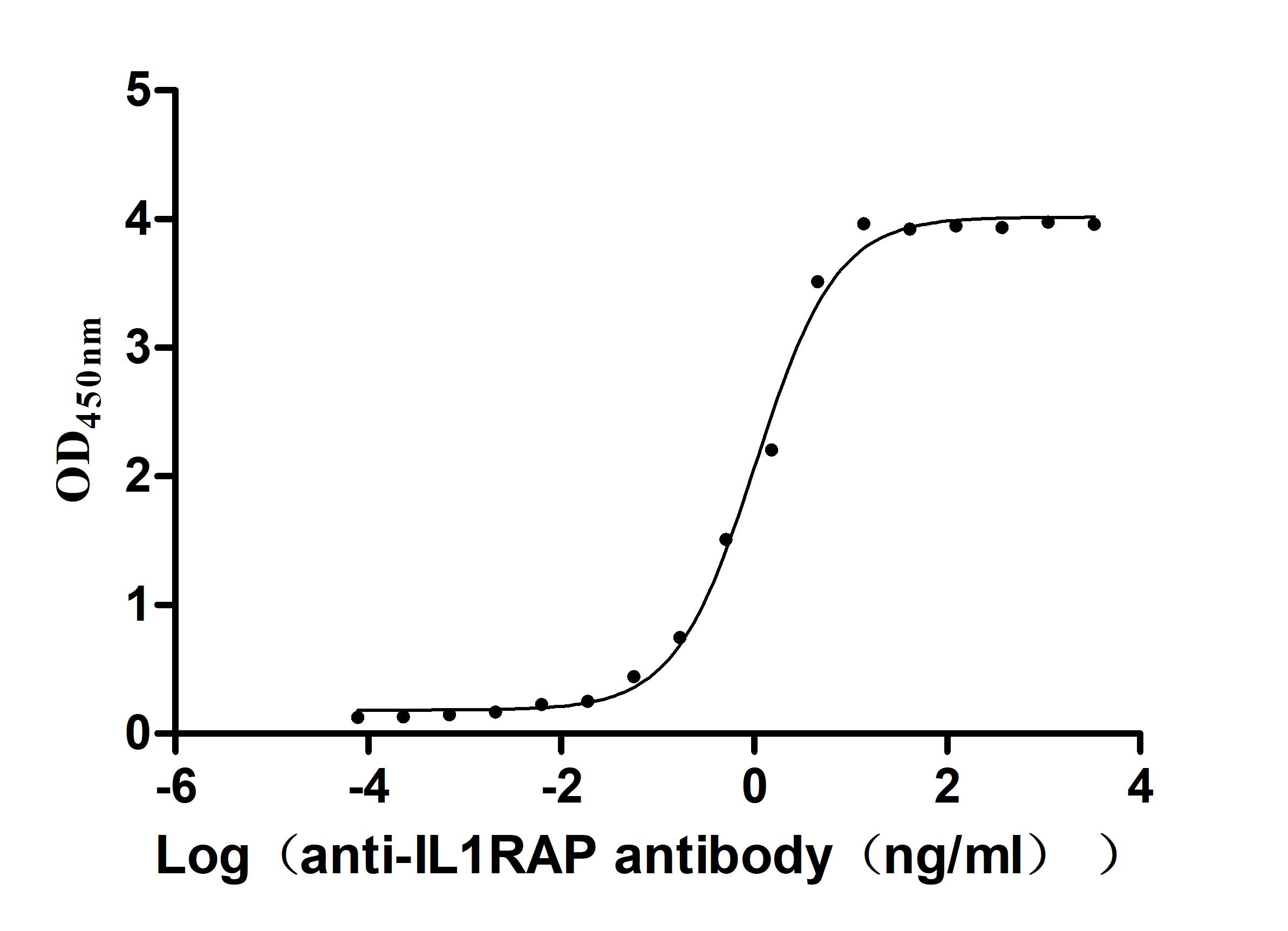Recombinant Rat Potassium/sodium hyperpolarization-activated cyclic nucleotide-gated channel 1 (Hcn1), partial
-
中文名稱:大鼠Hcn1重組蛋白
-
貨號:CSB-YP878087RA
-
規(guī)格:
-
來源:Yeast
-
其他:
-
中文名稱:大鼠Hcn1重組蛋白
-
貨號:CSB-EP878087RA
-
規(guī)格:
-
來源:E.coli
-
其他:
-
中文名稱:大鼠Hcn1重組蛋白
-
貨號:CSB-EP878087RA-B
-
規(guī)格:
-
來源:E.coli
-
共軛:Avi-tag Biotinylated
E. coli biotin ligase (BirA) is highly specific in covalently attaching biotin to the 15 amino acid AviTag peptide. This recombinant protein was biotinylated in vivo by AviTag-BirA technology, which method is BriA catalyzes amide linkage between the biotin and the specific lysine of the AviTag.
-
其他:
-
中文名稱:大鼠Hcn1重組蛋白
-
貨號:CSB-BP878087RA
-
規(guī)格:
-
來源:Baculovirus
-
其他:
-
中文名稱:大鼠Hcn1重組蛋白
-
貨號:CSB-MP878087RA
-
規(guī)格:
-
來源:Mammalian cell
-
其他:
產(chǎn)品詳情
-
純度:>85% (SDS-PAGE)
-
基因名:
-
Uniprot No.:
-
別名:Hcn1; Potassium/sodium hyperpolarization-activated cyclic nucleotide-gated channel 1
-
種屬:Rattus norvegicus (Rat)
-
蛋白長度:Partial
-
蛋白標(biāo)簽:Tag?type?will?be?determined?during?the?manufacturing?process.
The tag type will be determined during production process. If you have specified tag type, please tell us and we will develop the specified tag preferentially. -
產(chǎn)品提供形式:Lyophilized powder
Note: We will preferentially ship the format that we have in stock, however, if you have any special requirement for the format, please remark your requirement when placing the order, we will prepare according to your demand. -
復(fù)溶:We recommend that this vial be briefly centrifuged prior to opening to bring the contents to the bottom. Please reconstitute protein in deionized sterile water to a concentration of 0.1-1.0 mg/mL.We recommend to add 5-50% of glycerol (final concentration) and aliquot for long-term storage at -20℃/-80℃. Our default final concentration of glycerol is 50%. Customers could use it as reference.
-
儲存條件:Store at -20°C/-80°C upon receipt, aliquoting is necessary for mutiple use. Avoid repeated freeze-thaw cycles.
-
保質(zhì)期:The shelf life is related to many factors, storage state, buffer ingredients, storage temperature and the stability of the protein itself.
Generally, the shelf life of liquid form is 6 months at -20°C/-80°C. The shelf life of lyophilized form is 12 months at -20°C/-80°C. -
貨期:Delivery time may differ from different purchasing way or location, please kindly consult your local distributors for specific delivery time.Note: All of our proteins are default shipped with normal blue ice packs, if you request to ship with dry ice, please communicate with us in advance and extra fees will be charged.
-
注意事項:Repeated freezing and thawing is not recommended. Store working aliquots at 4°C for up to one week.
-
Datasheet :Please contact us to get it.
靶點詳情
-
功能:Hyperpolarization-activated ion channel exhibiting weak selectivity for potassium over sodium ions. Contributes to the native pacemaker currents in heart (If) and in neurons (Ih). May mediate responses to sour stimuli.
-
基因功能參考文獻:
- results implicate presynaptic NMDA receptor inhibition followed by reduced activity of presynaptic HCN1 channels, which would result in an increase in glutamate release and postsynaptic glutamate receptor activity, as a mechanism of ketamine action. PMID: 27965425
- HCN channels play a critical role in the separation of overlapping movement responses and allow for successful reaching behaviours. These data provide a novel mechanism for the encoding of multiple movement responses within shared networks of motor cortex. This mechanism supports a viewpoint of primary motor cortex as a site of dynamic integration for behavioural output PMID: 27568501
- Hyperpolarization-activated cyclic nucleotide-gated (HCN) 1 protein expression levels were increased in the thalamus under chronic pain condition. Results suggest, increased HCN channel activity in the thalamus of the ascending nociceptive pathway contributes to both chronic neuropathic and inflammatory pain conditions. PMID: 27542339
- Here the Investigators overexpressed rat HCN1 in human embryonic kidney cells (HEK293) and recorded pharmacologically isolated cationic currents (Ih) in cell-attached or whole-cell mode of the patch-clamp technique. Recurring activation of HCN1 reduced and slowed Ih in intact HEK293 cells (cell-attached mode). PMID: 27184742
- This study demonstrated that the aberrant changes of SST and NPY in several TRM brain regions(hcn1 mutation), suggesting that the peptidergic system might be involved in TRM epileptiform activity. PMID: 27685769
- During the senescent process, the HCN2 and HCN4 protein levels declined. PMID: 26341471
- Spatial learning and memory deficits in the chronic cerebral hypoperfusion model are associated with disturbed HCN1 and HCN2 surface expression in hippocampal CA1. PMID: 26021557
- Hcn1 is a tremorgenic genetic component in a rat model of essential tremor. PMID: 25970616
- Results suggest that HCN1 and HCN2 are expressed mainly by both the soma of mechanosensitive neurons in the trigeminal ganglion and peripheral axons of nociceptive neurons in the sensory root PMID: 25659346
- Activation of GABAB receptors ameliorates cognitive impairment via restoring the balance of HCN1/HCN2 surface expression in the hippocampal CA1 area PMID: 24838625
- these findings identify HCN1 channels as a novel neural target for type I interferons providing the possibility to tune neural responses PMID: 23042740
- acute abrogation of HCN1-FLNa interaction in neurons, with the use of decoy peptides that mimic the FLNa-binding domain of HCN1, abolishes the punctate distribution of HCN1 channels in neuronal cell bodies PMID: 24403084
- HCN1 contributes substantially to hyperpolarization-activated current properties in individual cortical plate neurons PMID: 23821600
- High HCN1 expression induced by status epilepticus is responsible for epileptogenesis. PMID: 23187002
- Data indicate that HCN1 and HCN2 form alternate ternary protein complexes with hair-cell stereociliary proteins. PMID: 22948144
- This study demonistrated that Hi channel expression in area postrema neurons in the induction mechanism of nausea and vomiting. PMID: 22722099
- knockdown of HCN1 channels in the hippocampus increased cellular excitability and resulted in physiological changes PMID: 22884333
- TRIP8b isoforms are important regulators of HCN1 trafficking in entorhinal neurons. PMID: 22363812
- Hyperpolarization current expression was high in corticospinal neurons and low in corticostriatal and corticocortical neurons, a pattern mirrored by mRNA levels for HCN1 and Trip8b subunits. PMID: 21795621
- HCN1 band density in trigeminal ganglion neurons increased with postnatal age P1-P35. PMID: 21753027
- This study demonistrated that the majority of LHb neurons projecting to the monoaminergic brainstem nuclei express a similar pattern of HCN transcripts, with high levels of HCN2 to HCN4 mRNAs and low levels of HCN1 mRNA PMID: 21798320
- HCN1 channelopathy begins rapidly and persists after status epilepticus, involves both transcriptional and nontranscriptional mechanisms, and may be an early contributor to epileptogenesis. PMID: 21976514
- I(h) modulates information processing in the hippocampus, and I(h)-mediated depolarization enhances the temporal precision of neuronal integration. PMID: 21326231
- increasing cAMP levels in cells antagonized the up-regulation of HCN1 channels mediated by a TRIP8b construct binding the CNBD exclusively. PMID: 21504900
- Heterologous expression of rat HCN1 gated ion channels suggests that cytosolic contents suppress hyperpolarization activated current I(h); such a mechanism might constitute a reserve in I(h)-channel function in vivo. PMID: 20806410
- these results suggest that HCN channel activity can modulate the GABAergic synaptic transmission in the BLA, which in turn control the amygdala-related emotional behaviors such as anxiety. PMID: 21185265
- These data provide additional information for the characterization of HCN1 mRNA as a new prospective target for the medication of vascular dementia. PMID: 19892002
- in apical dendrites of hippocampal, subicular and neocortical layer-5 pyramidal cells PMID: 12389030
- densely clustered at synaptic terminals of retinal bipolar cells and photoreceptors. PMID: 12786975
- HCN1 and HCN2 expression were measured using in situ hybridization and immunocytochemistry in hippocampi; the expression of HCN isoforms is dynamically regulated in human as well as in experimental hippocampal epilepsy PMID: 12890777
- HCN1 is distributed similarly to HCN2 along plasma membrane of dendritic shafts in layer I of the neocortex and stratum lacunosum moleculare of the hippocampal CA1 area, suggesting that these subunits could form heteromeric channels. PMID: 14991560
- Strong HCN1 staining was present on octopus and bushy cells of the ventral cochlear nucleus, principal neurons of the lateral and medial superior olive, and neurons of the ventral nucleus of the lateral lemniscus. PMID: 15245481
- These studies show that HCN1 and HCN2 channels in GABAergic GP neurons are key determinants of the regularity and rate of pacemaking as well as striatal resetting of this activity. PMID: 15525777
- The present findings suggest that HCN1 channels may provide a significant route for modulating co-ordinated cerebellar synaptic transmission through basket cells. PMID: 15869503
- Molecular basis for multiple actions of anesthetics on neuronal HCN channels, highlight the importance of proximal C terminus in modulation of HCN channel gating by diverse agents. PMID: 15958747
- HCN1 subunit in the spinal cord and extend previous reports from the brainstem. PMID: 16503331
- Data provide the first evidence that relatively mild changes in the neonatal environment have a long-term impact of absence seizures, Ih and HCN1, and suggest that an increase of Ih and HCN1 is associated with absence seizure reduction. PMID: 16820024
- Loss of function of dendritic HCN1 channels in layer 5 pyramidal neurons provides a somato-dendritic mechanism for increasing the synchronization of cortical output, and is therefore likely to play an important role in the generation of absence seizures. PMID: 17095562
- Expression and modulation of I(h)(via HCN1 channels) in the peripheral nervous system , including specialized sensory structures, may play a significant role in sensory processing and contribute to spontaneous pain and tactile allodynia. PMID: 17196750
- Data show that hyperpolarization-activated, cyclic nucleotide-gated cation (HCN) channels influence the activity of globus pallidus neurons. PMID: 17439493
- There is a role for HCN1 channel-mediated presynaptic I(h) in hippocampal maturation PMID: 17460082
- The total number of hyperpolarization-activated cation current I (I[h]) channels, not their distribution in dendrites of pyramidal neurons, governs the degree of temporal summation of excitatory postsynaptic potentials. PMID: 17687042
- redistributed HCN1 in CA1 pyramidal neurons. PMID: 17848552
- Reduction in HCN1 channel expression is an accompaniment of epileptogenesis in different adult models of temporal lobe epilepsy. PMID: 18397293
- HCN1 mRNAs were expressed in large diameter (55-80 microm) neurons of dorsal root ganalian in rat and HCN1 are present in large diameter neurons and small diameter neurons. PMID: 18450385
- Overexpression of HCN1 channels blunts excitability of aortic baroreceptor neurons and baroreflex sensitivity in diabetic rats. PMID: 18524809
- Aberrant h channel subunit trafficking contributes to h channelopathy in a rat model of temporal lobe epilepsy. PMID: 18657617
- Competition may therefore exist in vivo between the two binding sites for HCN1, with binding of HCN1 to protocadherin 15 CD3 favored between 26.5 and 68 microm Ca(2+) PMID: 19008224
顯示更多
收起更多
-
亞細(xì)胞定位:Cell membrane; Multi-pass membrane protein.
-
蛋白家族:Potassium channel HCN family
-
組織特異性:Highly expressed in cerebral cortex, cerebellum, throughout the hippocampus, in medial habenula, anterior dorsal nucleus in the thalamus, tenia tecta, several nuclei of the general motor system and in optic nerve layer. Detected in a subset of elongated c
-
數(shù)據(jù)庫鏈接:
Most popular with customers
-
Recombinant Human Retinol-binding protein 4 (RBP4) (Active)
Express system: Mammalian cell
Species: Homo sapiens (Human)
-
Recombinant Human Angiopoietin-2 (ANGPT2) (Active)
Express system: Mammalian cell
Species: Homo sapiens (Human)
-
Recombinant Macaca fascicularis CD93 molecule (CD93), partial (Active)
Express system: Mammalian cell
Species: Macaca fascicularis (Crab-eating macaque) (Cynomolgus monkey)
-
Recombinant Human Transferrin receptor protein 1 (TFRC), partial (Active)
Express system: Mammalian cell
Species: Homo sapiens (Human)
-
Recombinant Human Interleukin-2 receptor subunit alpha (IL2RA), partial (Active)
Express system: Mammalian cell
Species: Homo sapiens (Human)
-
Recombinant Human CD81 antigen (CD81), partial (Active)
Express system: Mammalian cell
Species: Homo sapiens (Human)
-
Recombinant Mouse Cytotoxic and regulatory T-cell molecule (Crtam), partial (Active)
Express system: Mammalian cell
Species: Mus musculus (Mouse)
-
Recombinant Macaca fascicularis Interleukin 1 receptor accessory protein(IL1RAP), partial (Active)
Express system: Mammalian cell
Species: Macaca fascicularis (Crab-eating macaque) (Cynomolgus monkey)


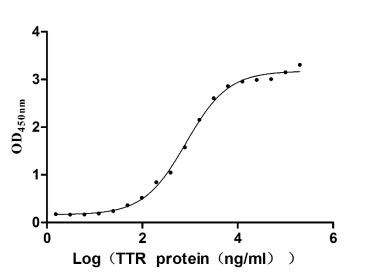
-AC1.jpg)
